Sightseeing
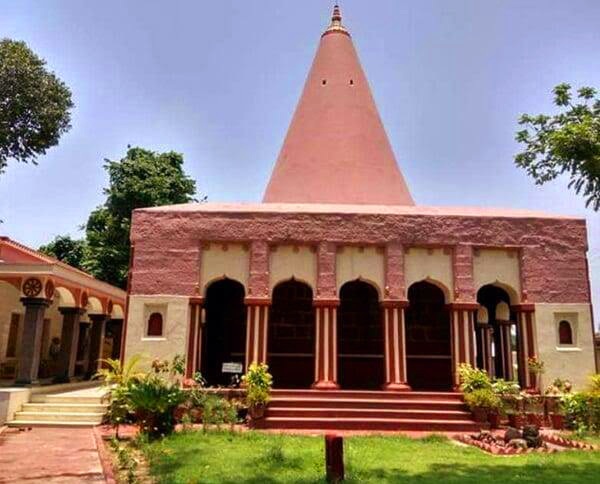
Savitri Mata Temple
Goddess Savitri is the ancestral deity of the Malla Dev dynasty of Jhargram, she is worshipped in form of Durga. There is no specific idol kept in the temple but a stone believed to have divine embodiment of Goddess is worshipped here. The worship is strictly followed according to Puranas the ancient Hindu religious texts during the Durga Puja as Brahmins recite hymns from the scriptures from the Devi Mahatmyam (Chandi Path) for ten days from Mahalaya to Dashami followed by the Maha Aarti on Durga Ashtami the eighth day of this orthodox worship and the Ritual drummers(dhakis) carrying large drums( dhaks) to show off their skills. The rituals of the Durga Puja are still organized and performed by the Royal Family of Jhargram.
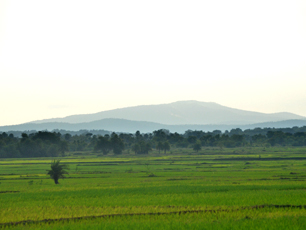
Belpahari
Belpahari is a valley situated at a distance of 35 km from Jhargram. The pitch black road from Jhargram to Belpahari is thickly forested with a variety of tropical trees on both sides. The place is surrounded by Sal, Mahua, Piyal, Sonajhuri and Eucalyptus trees. A beautiful waterfall is located at Ghagra,the rocky pedestal and craggy rocks are the beauty of Ghagra.Tarafeny Barrage is situated nearby and is worth a visit along with the peaceful and serene environment of the tribal villages are mesmerizing. The Spring of Ketki is in the edge of Singhadoba and Burijhor village where the natural fountain flows in its own rhythm. You can also visit Laljal a hilly village where you can put your feet on red soil and walk,as the hills are red, the water flowing from here seems to be red with mixture of iron and copper ore.
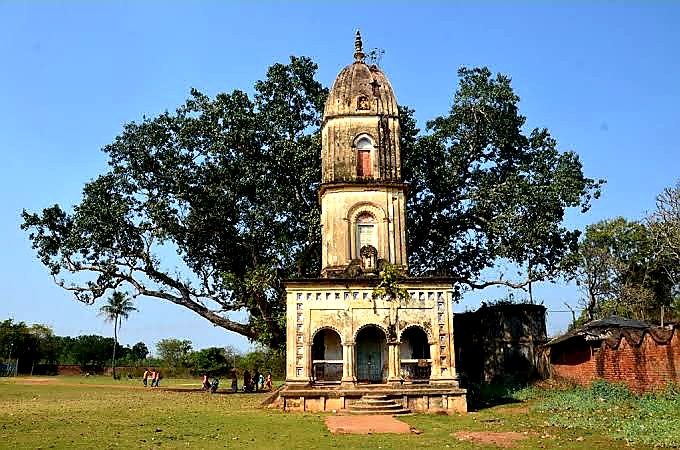
Chilkigarh Sacred Grove
The Chilkigarh sacred grove is the third biodiversity heritage site in West Bengal and the twelfth site over India for conversation of biodiversity. It is a traditionally protected forest maintained on social and religious grounds, which is situated in Jamboni about 15kms from Jhargram. The grove occupies around 60 acres of land and is composed of relict forests in its near-climax stage along the east of the Dulung river. The landmass is considered sacred as it harbors the historically eminent temple of Kanak Durga, the ancestral deity of the Royal family of Jamboni and the Raj Palace of Chilkigarh. Interestingly, the Chilkigarh Kanak Durga temple complex is the largest sacred grove in West Bengal, which has not yet attracted much media attention. Additionally, the grove has protected 26 species of animals including amphibians and reptiles.
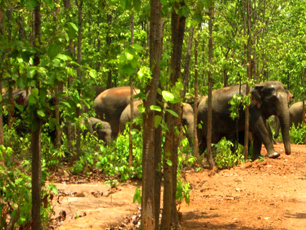
Mayurjharna
Mayurjharna Elephant Reserve is the only elephant reserve in Eastern India.The reserve is situated on the border of the states of West Bengal and Jharkhand and is about 70 kms from Jhargram. . The area of this elephant reserve is 414.06 square km. and the nearby 1436 square kilometres of land is known as the ‘Zone of Influence’. The elephant population in this elephant reserve is 118. This area was declared as an Elephant Reserve in 2002.
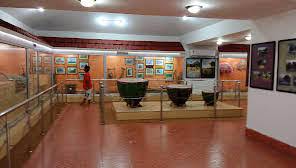
Eco-Tourism Centre & Tribal Museum
The Jhargram eco-tourism centre is about 2 km outside Jhargram Palace campus. Situated on the state highway,this beautiful forest retreat welcomes you to embrace the essence of nature .This complex also houses a tribal museum displaying the indigenous tribal culture of the district. Tribal folk performances are also held on weekends and visitors can enjoy food at the in-house restaurant.
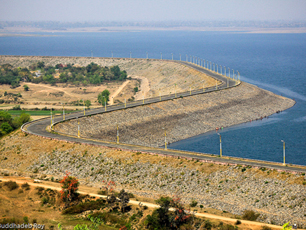
Mukutmanipur
Mukutmanipur is an escape to serenity, a weekend at this beautiful place is full of ultimate relaxation. Nature's bounty grips you as you would find yourself surrounded by the hills, lush green forests and crystal clear lagoons. With hills and forests surrounding a huge water body that changes its color in different seasons, Mukutmanipur is the right place for those who are looking for some adventure along with absolute relaxation. The place is around 3 hours drive from Jhargram Palace.
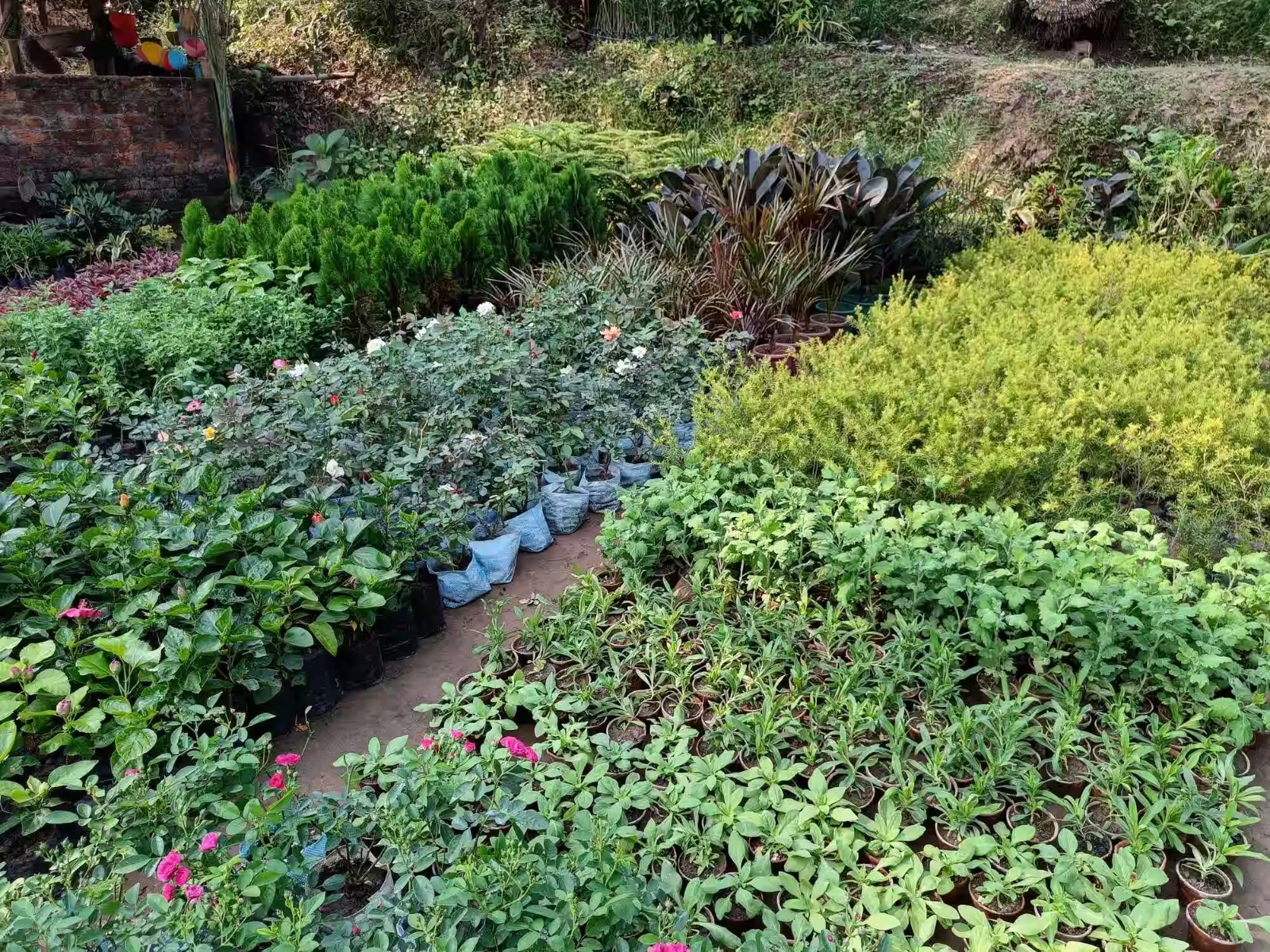
Medicinal Plant Garden
The garden is locally known as Vessaj Uddan and is located in Garsalboni . The distance from Jhargram Palace to the Garden is 9 k.m . It is nested in deep forest, here varieties of plants such as tulsi , lemon leaf , mixed spice leaves etc are to be found . Some plants of unknown species are used for treatment of various diseases.
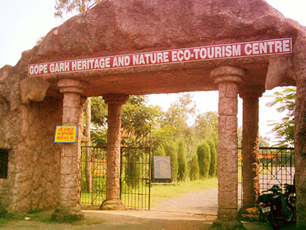
Gopegarh Eco-tourism Centre
Gopegarh Heritage & Nature Eco-tourism Centre is situated at Gopegarh. It is 36 km. away from Jhargram. Here you enjoy paddled boat ride for amusement, a beautiful garden and children park inside the eco tourism centre. You can climb the watch tower to have panoramic view of River Kangsabati and Musical Fountain. There is a Food Plaza where from boarders as well as day visitors can have quality food.An Arboretum has been raised for educational purpose and research.
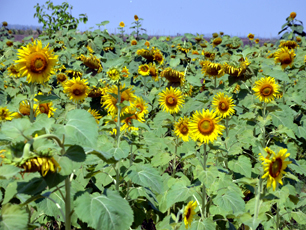
Kodopal Agro Tourism
Kodopal Eco-Nest & Biological Fruit Basket is developed delta-land at the confluence of river Subanarekha and Dulung which is situated near about 45kms from Jhargram, consisting around 200 acre of sandy fertile land. It is a pilot Agro tourism project of the Government of West Bengal, whereby the urban tourists can engage in farming activities, experience the bullock cart, tractor ride, fly kites, eat authentic food, understand the local culture, enjoy the folk songs and dance, buy fresh farm produce and in turn the farmers maintain the farm hygiene, greets new tourists, sells farm produce at a better price, earns a livelihood all year round.
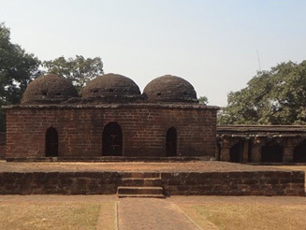
Kurumbera Fort
Kurumbera Fort was built in the year 1438-1469. The monument is protected, under the Archelogical Survey of India.The fort contains a three domed structure over a platform, along with a sacrificial altar. The establishment of Kurumbera Fort was written in Oriya inscriptions during the rule of Surya Vansi king of Orissa Gajapati Kapilendra Dev. The Fort is around 65kms from Jhargram.
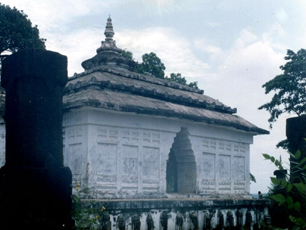
Rameshwar Temple
The temple is situated near Gopiballavpur. The local people believe that Lord Rama king of Ayodhya once came to the banks of river Subarnarekha and established a Shivlinga to be worship in Rameshwar.It is also said that Rishi Valmiki had started writing Ramayana at the footsteps of Rameshwar Temple, the remains of the old temple are just as thrilling. A series of stone pillars stand side by side like sentinels. A new temple has come up near the ruins. It bears characteristics of the Orissa school of architecture, the shivlinga is situated deep within the garva griha.
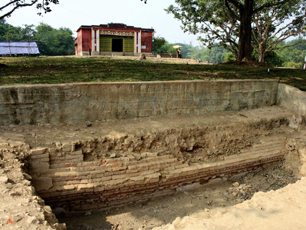
Mughalmari
The archaeological remains of Mughalmari represent the most extensive evidence of early medieval culture in the region. It may be pointed out here in this connection that the Chinese pilgrim Hiuen Tsang who visited Bengal in 638 CE has referred to the existence of 10 monasteries and 1,000 monks. The present discovery of a monastic complex at Mughalmari is therefore a significant landmark in the history of Bengal and vindicates the pilgrim's observation for the first time. Mughalmari is around 100kms from Jhargram.
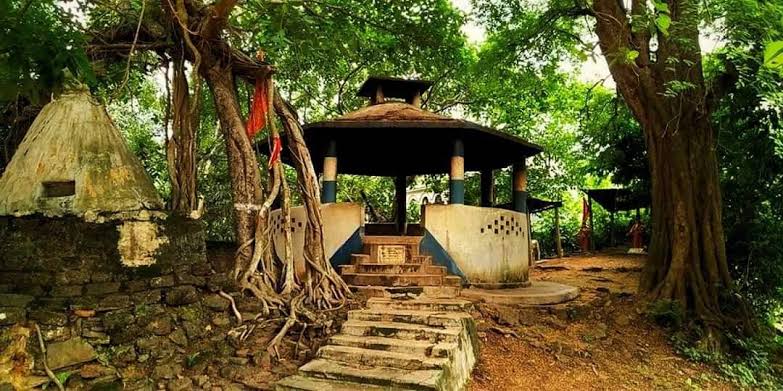
Topovan
It is a mysterious historic temple, which dates back to the mythical Ramayana days. There are different schools of thought about Rishi Valmiki’s ashram in Ramayana and one of the legends say that it was right here where the dacoit Ratnakar got enlightened to sage Valmiki after a spell of tough meditation. It is also believed that Goddess Sita lived here with her two sons Luv & Kush in the ashram of Rishi Valmiki. You can also spot plenty of Chitals (spotted deer) in the deep forest surrounding the ruins.The distance between Jhargram to Tapoban is around 72 km.
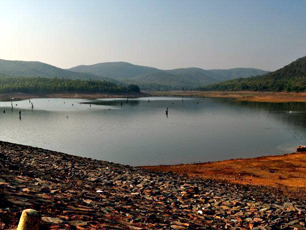
Ghatshila
Is in the adjacent state of Jharkhand and is about 65 km from Jhargram.You can spend a day at the beautiful Burudhi Dam & Dharagiri falls. Burudih Dam is situated about a few kilometres to the North Ghatshila. It is huge lake where you can explore around riding a speed or paddle boat. Binda Mela is held every year in the month of October at Ghatshila on the bank of the lake for fifteen days. It is a very popular festival, particularly for the Santhals tribes. Dharagiri waterfalls 21 feet down from Dharagiri Hill. You can find prehistoric stone carvings on the falls riverside. This region is a forestry hilly type and perfect for picnicking.
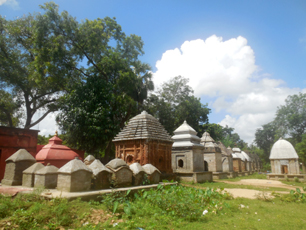
Shri Radha Govinda Temple
This holy temple of Lord Krishna is situated in Gopiballavpur. According to fables Shyamananda Mahaprabhu, a prominent saint in the Vaishnava sect, was directed in his dream by Shrimati Radha Rani to travel and carry the holy waters of Yamuna to this place and establish a temple, since then the village is named after Gopiballav (Sri Krishna). The village houses this old temple since 1400 AD and it’s being run and administered by Vaishnava Goswami Families since then. Currently the Mahant is the head of the temple. The temple is known as Shri Radha Govinda Mandir and to the vaishnavas as "Gupta Vrindavan". It houses the idols of Shri Radha Govind Ji and Smt. Radha Rani along with idols of Jagannatha Mahaprabhu, Balabhadra and Subadhra. An annual Car Festival (Ratha Yatra) is held every year.
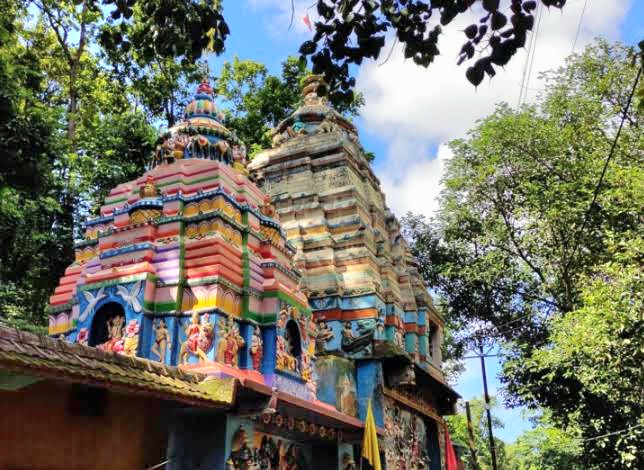
Rankini Mata Temple
The Rankini mata temple is dedicated to Goddess Mahakali.It is a very ancient and famous temple located in Jadugora around 100kms from Jhargram in the adecent state of Jharkhand. While traveling to visit this temple you will cross the Galudih dam and Uranium factory of Jadugora. The ancient temple is said to have formerly existed on a rock and was built by Raja Jagannath of Dhalbhumgarh. The temple even has witnessed human sacrifices in the past till 1865, which was eventually stopped by the British. One can visit the "Kapargadi Ghat " near the temple about 100 metres away.